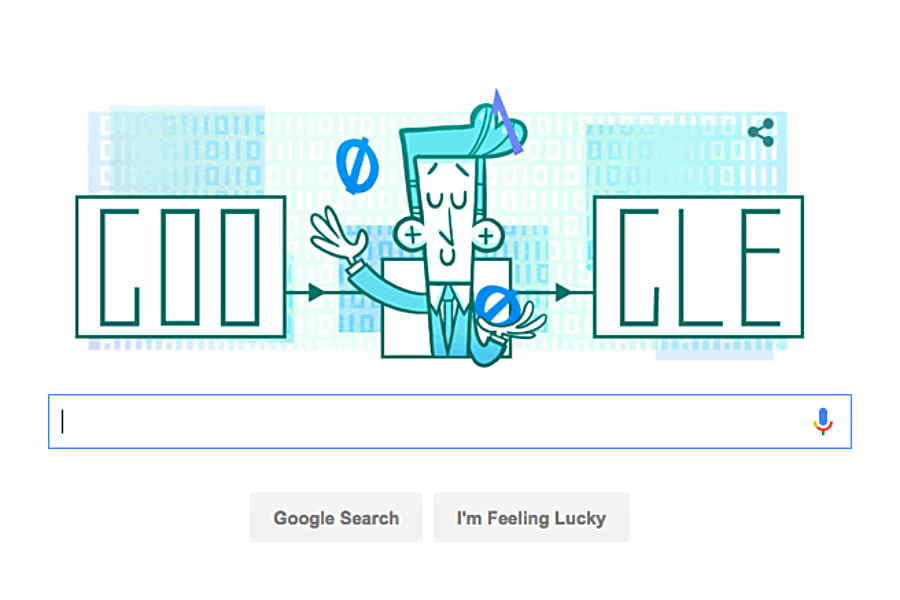How Claude Shannon's master thesis changed our world
The juggling, suited man on the newest Google Doodle is American mathematician and engineer Claude Shannon. April 30, 2016 marks what would have been his 100th birthday.
Working around the time of, and occasionally encountering, Einstein and Alan Turing, Dr. Shannon left his own legacy of note behind, contributing to significant advances in computing and information, as well as encryption and entropy. During his lifetime, he achieved the title of “the father of information theory.”
“Notwithstanding this list of staggering achievements in mathematics and engineering, Shannon managed to avoid one of the more pernicious trappings of genius: taking oneself too seriously,” Google states in the company’s description of its latest doodle.
Shannon’s most notable achievement, which earned him his moniker: a 1948 paper entitled “A Mathematical Theory of Communication.”
In the paper, Shannon created the basic blocks of what would later be known as information theory, mathematics based around how to store and transfer data. He introduced the theory that information was a measurable element and defined the basic unit, which would latter be called a “bit."
“Today Shannon’s insights help shape virtually all systems that store, process, or transmit information in digital form – from compact discs to supercomputers, from facsimile machines to deep-space probes such as Voyager,” IEEE Spectrum's John Horgan wrote in 1992.
Although, the source of Shannon’s renown was generated much earlier than 1948.
While in his early 20’s pursuing a Master’s degree at MIT, Shannon’s background in both mathematics and engineering enabled him to envision a link between an algebraic system created by George Boole in the 1800s and the telephone switching circuits of the time, according to profile from New York University.
The resulting connection created the basis of modern computing, where the value of “1” and “0” are assigned to circuits that act as “the nervous system of every computer in the world,” NYU states.
When asked about his Master’s thesis, “A Symbolic Analysis Of Relay And Switching Circuits,” in an interview with IEEE Spectrum at the age of 75, Shannon made light of the discovery.
“It just happened that no one else was familiar with both those fields at the same time,” he said. Adding, “I’ve always loved that word, ‘Boolean.’”
As noted as Shannon was for his achievements, he was also known for his humor and pranks.
Much of his own tinkering and inventing resulted in items such as rocket-powered frisbees, flame-throwing trumpets, a unique unicycle that made it easier to ride and juggle simultaneously, and a mechanical miniature of several clowns juggling.
"A world-class prankster and juggler, he was often spotted in the halls of Bell Labs on a unicycle," Google states of Shannon during his years working for Bell Telephone Laboratories in the 1940s.
His Google Doodle, animated by artist Nate Swinehart, pays homage to both his genius and his pursuit of levity and personal interests. Shannon juggles the numbers that helped him revolutionize how much of the world computes and stores information.







